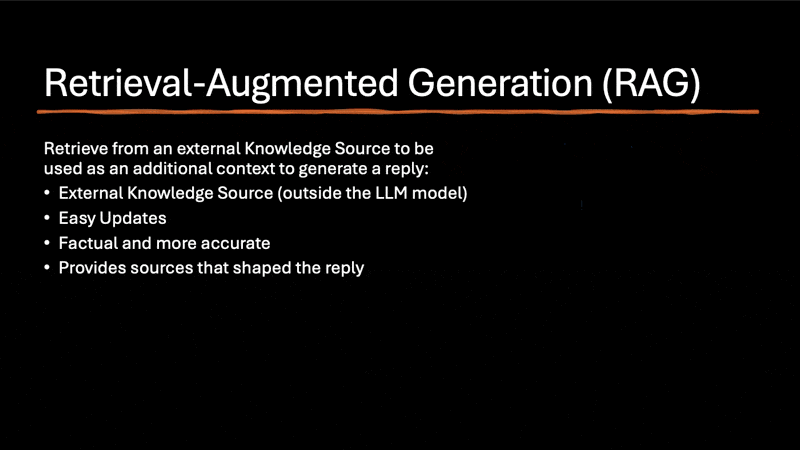2025 AI Trends: How Agentic RAG and Specialized Models Are Reshaping Business Intelligence
** | Last Updated: May 2025**
Introduction: From Lab to Boardroom – The Quiet Revolution in Enterprise AI
By 2025, businesses have moved beyond fascination with “chatty” general-purpose AI models. The new imperative? Deploying systems that solve real operational challenges. This article explores two transformative technologies—Agentic Retrieval-Augmented Generation (RAG) and Specialized Language Models (SLMs)—and their role in creating practical, business-ready AI solutions.
Part 1: Solving AI’s Accuracy Crisis with RAG Technology
1.1 Why Do Generic AI Models Often Miss the Mark?
When asked “What was Company X’s Q3 2024 revenue growth in North America?”, generic models might discuss industry trends instead of providing specific figures. The root cause? Lack of real-time business context.
The Solution: Retrieval-Augmented Generation (RAG)
This two-stage process delivers precise answers:
-
Retrieval Phase: Extract data from enterprise databases/PDF reports -
Generation Phase: Combine retrieved evidence with query context

Figure: RAG architecture diagram (Source: Customertimes)
1.2 Vector Databases: The Engine of Semantic Understanding
-
Core Mechanism: Converts text into multidimensional vectors
-
Example: “Innovation” and “disruption” cluster closely; “conservatism” resides in opposite space -
Advanced Use Case: Queen (vector) – Woman + Man ≈ King
-
-
Top Tools:
- [Milvus](https://github.com/milvus-io/milvus): Open-source distributed vector DB - [Pinecone](https://pinecone.io): Fully-managed cloud solution - Weaviate: Hybrid search (semantic + keyword) capabilities
Part 2: Building Enterprise-Grade RAG Systems
2.1 Limitations of Basic RAG
-
Single-pass retrieval/generation cycle -
Struggles with complex formats (PDF tables/Excel charts) -
Noisy or redundant search results
2.2 Four Strategies for Industrial-Strength RAG
Strategy 1: Document Preprocessing Standardization
-
Essential Tools: - Unstructured: Converts PDFs/HTML to Markdown - LlamaParse: Optimized for legal/medical documents - Sample Code: ```python from unstructured.partition.pdf import partition_pdf elements = partition_pdf("annual_report.pdf")
Strategy 2: Hybrid Search Optimization
-
Combine vector search with traditional keyword matching -
Metadata Filtering: Narrow results by document type/department/year
Strategy 3: Dynamic Context Management
-
Implementation: -
Retrieve adjacent text chunks during search -
Use context-aware models like Jina Embeddings
-
Strategy 4: Quality Control Systems
-
RAGas Framework: Evaluate retrieval relevance -
LangFuse: Monitor response quality in production
Part 3: The Rise of Specialized Models – Why Smaller Beats Bigger
3.1 Business Value of Domain-Specific Models
| Model Type | Case Study | Cost Efficiency |
|---|---|---|
| General-Purpose | GPT-4.1 | 1x |
| Financial Specialized | BloombergGPT | 3x |
| Function-Calling Optimized | Functionary-Medium | 5x |
Data Source: MTEB Benchmark Leaderboard
3.2 Real-World Applications
-
Legal Tech: Automated contract clause comparison -
Healthcare: Structured medical record analysis -
DevOps: Context-aware SQL query generation
3.3 Model Orchestration Blueprint
1. Use BGE-ICL for initial retrieval (80% cost reduction)
2. Deploy CodeLlama for SQL generation
3. Reserve GPT-4.1 for edge cases
Part 4: Intelligent Agents – When AI Starts Taking Action
4.1 Core Capabilities of AI Agents
-
Multi-Step Planning: Decompose “Create marketing plan” into 10 sub-tasks -
Tool Integration: Connect to CRM/ERP systems -
Persistent Memory: Track user preferences via knowledge graphs
4.2 Enterprise Agent Frameworks
- [CrewAI](https://github.com/crewAIInc/crewAI): Multi-agent collaboration
- Microsoft [AutoGen](https://github.com/microsoft/autogen): Visual workflow design
- LangChain [LangGraph](https://www.langchain.com/langgraph): State management
4.3 Case Study: Intelligent Finance Assistant
-
Parse expense claims from emails -
Validate against corporate travel policies -
Generate approvals and update HR systems
Part 5: Implementation Roadmap for Businesses
5.1 Phase 1: Needs Assessment
-
High-Impact Use Cases: -
Customer service automation (60% faster resolution) -
Contract review automation (45% error reduction)
-
5.2 Phase 2: Technical Implementation
1. Data Preparation:
- Clean legacy docs with Unstructured
- Build knowledge base using LlamaIndex
2. Model Deployment:
- Finance: BloombergGPT + BGE-ICL
- Legal: LawBERT + Milvus
3. System Integration:
- Connect to business apps via LangChain
5.3 Phase 3: Continuous Improvement
-
Quality Assurance: Weekly RAGas evaluations -
Cost Optimization: Analyze API logs to replace underperforming components
Part 6: The Next Frontier in AI Development
6.1 Multimodal RAG Breakthroughs
-
GPT-4V: Analyze charts in PDF reports -
LLAVA: Unified text/image retrieval
6.2 Memory Management Innovations
-
Zep Memory: Long-term context storage -
Knowledge Graphs: Cross-session information linkage
Conclusion: Specialization Wins the AI Race
While tech giants chase trillion-parameter models, pragmatic enterprises are achieving better results with curated model portfolios. The 2025 AI landscape proves: Ten specialized models outperform one expensive generalist.
As a Fortune 500 CTO noted: “Our AI doesn’t need to quote Shakespeare – but it must master GAAP accounting.” This encapsulates the new era of business-focused AI.
All referenced tools are production-tested. Download implementation templates: Customertimes White Paper
Follow the author for latest case studies and code samples
